Ducati 900SS
The Ducati’s fairing and slim build gave good aerodynamics, which combined with the twin s light weight to make it competitive against more powerful rivals.
Few bikes come close to matching the aggressive look of the 900SS, with its clip-on bars, single seat and rearset footrests, plus the desmo V-twin engine’s unfdtered Dell'Or to carbs and free- breathing Conti pipes.
Ducati’s original 900 Super Sport was one of the most singleminded sporting superbikes that ever devoured an innocent public road. It was essentially a street-legal production racer: fast, raw and uncompromising. It handled and stopped brilliantly, looked and sounded gorgeous and was a match for anything on road or track.
The 900SS owed its existence to Ducati’s victory in the Imola 200 race in 1972, when factory pilots Paul Smart and Bruno Spaggiari had finished first and second ahead of numerous factory opponents. The factory celebrated by producing a small batch of road-legal replicas of the racebike. These were popular, so more were built, this time called the 750 Super Sport instead of Imola Replica as the model had initially been known.
The half-faired 750SS mimicked Smart’s fully faired racer with its silver finish. Its 748cc V-twin engine came from the firm’s 750 Sport, and was tuned with desmodromic valve operation, high- compression forged pistons, polished internals, big Dell’Orto carbs and free-breathing Conti pipes.
Fabio Taglioni’s engine format of 90-degree, inline V-twin with bevel drive to single overhead camshafts had already become a Ducati trademark, but this was the first roadgoing twin to use his desmodromic system of positive valve closure.
Racing success
Ducati built only about 200 bikes, but all were snapped up and some were raced with good results in 1974. The Bologna factory was encouraged, and the following year created the more widely available 900SS, by replacing the smaller engine with a V-twin unit based on that of the existing 860GT. This combined a bigger, 86mm bore with the original 74.4mm stroke, giving a capacity of 864cc. Like the smaller model, it featured desmo valvegear, polished conrods, unfiltered 40mm DelTOrtos and barely silenced Contis.
Those mods lifted peak power to an impressive 79bhp at 7000rpm at the crankshaft, or 68bhp at the rear wheel, and the 900SS had the chassis to match. Like its 750SS predecessor it was starkly functional, with its half-fairing, clip-on handlebars, rearset footrests, twin drilled Brembo front discs, and racy single seat. There was no electric starter, nor anything else not required for the bike’s sole purpose of providing high performance.
The 900SS roared to a top speed of I35mph (2I7km/h), and cruised at lOOmph (I6lkm/h) with a smooth, long-legged feel. That was seriously fast in 1975, and the Ducati’s handling was even better. It was not the most agile of bikes, but no rival could match the cornering poise and high-speed stability provided by the lean V-twin’s blend of rigid frame, long wheelbase and taut Marzocchi suspension. Roadholding, braking and ground clearance were all exemplary too.
The uncompromising 900SS demanded commitment from it rider, and was too extreme for some. But it made a superb production racer. And for road riders who were captivated by its beauty, speed and pure-bred character, there was no bike to touch it. To paraphrase a road test of the time, the 900SS was a distillation of all the thrills and sensations that made high-performance motorcycling worthwhile.
Just Like Mike's - The Hailwood Replica
Paul Smart's Imola 200 win of 1972 was one great moment in Ducati's history, and another came six years later when Mike Hailwood, returning to racing from retirement, won the Isle of Man Formula One TT on a Ducati V-twm prepared by Sports Motorcycles. The following year Ducati introduced a special 900SS Hailwood Replica in honour of the victory. As well as a full fairing in Ha wood's red and green paint scheme, it featured gold-anodized Brembo brake calipers, new cast wheels and longer rear shocks. The Replica immediately became a bestseller, and remained in Ducati's range, with various modifications along the way, right up until 1985.
Ducati’s 864cc, 90-degree V-twin engine featured bevel-shaft drive to its sohc, desmodromic valvegear. Long-legged power delivery and unshakeable high-speed stability were the 900SS trademarks.
Specification Ducati 900SS (1975)
- Engine Air-cooled sohc four-valve 90-degree V-twin
- Capacity 864cc (86 x 74.4mm)
- Maximum power 79bhp @ 7000rpm
- Transmission Five-speed, chain final drive
- Frame Steel ladder
- Suspension Telescopic front; twin shocks rear
- Brakes Twin discs front; single disc rear
- Weight 4141b (188kg) wet
- Top speed 135mph (217km/h)


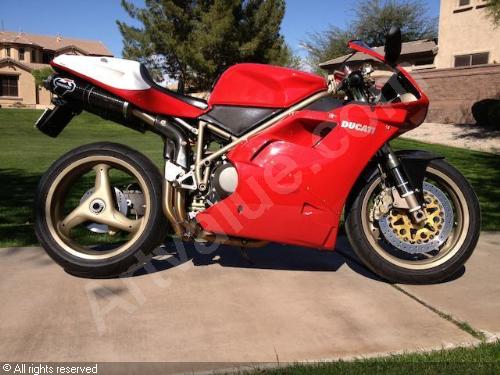


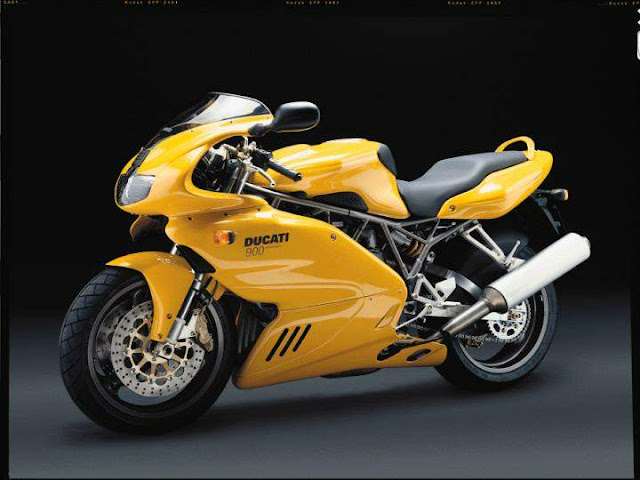
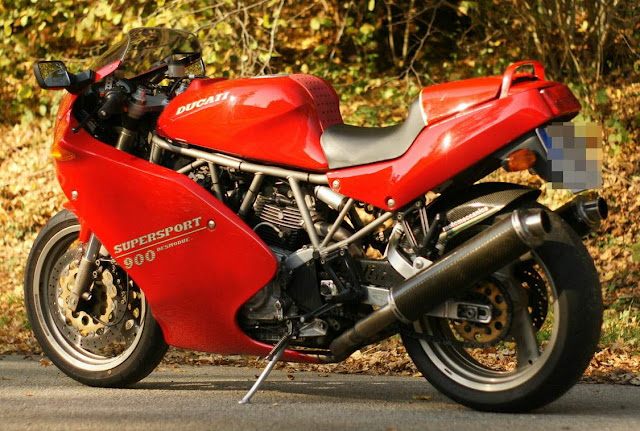
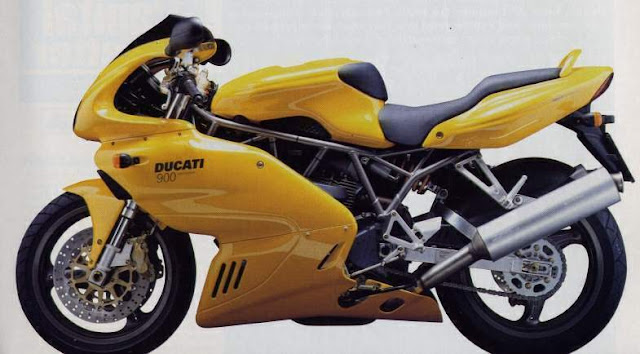
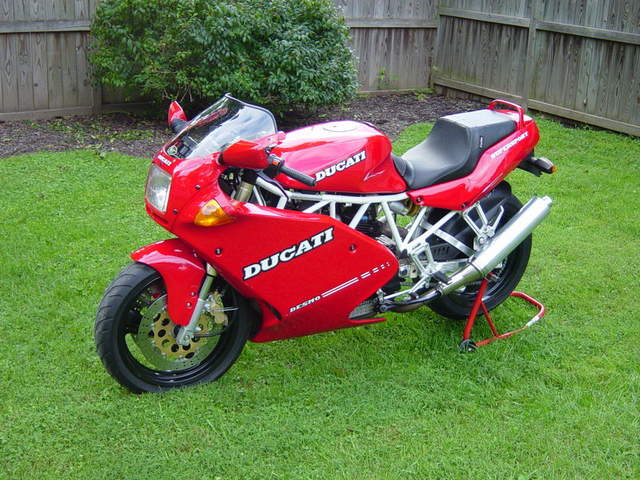
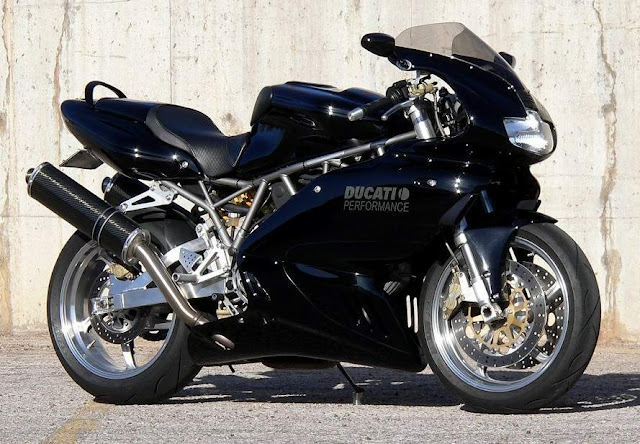

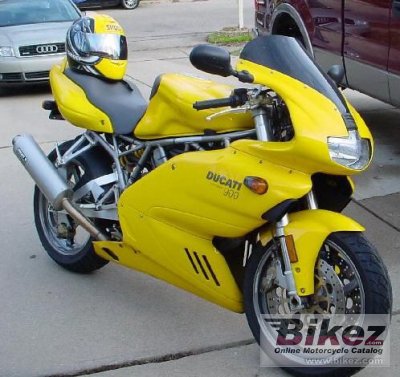










0 comments: